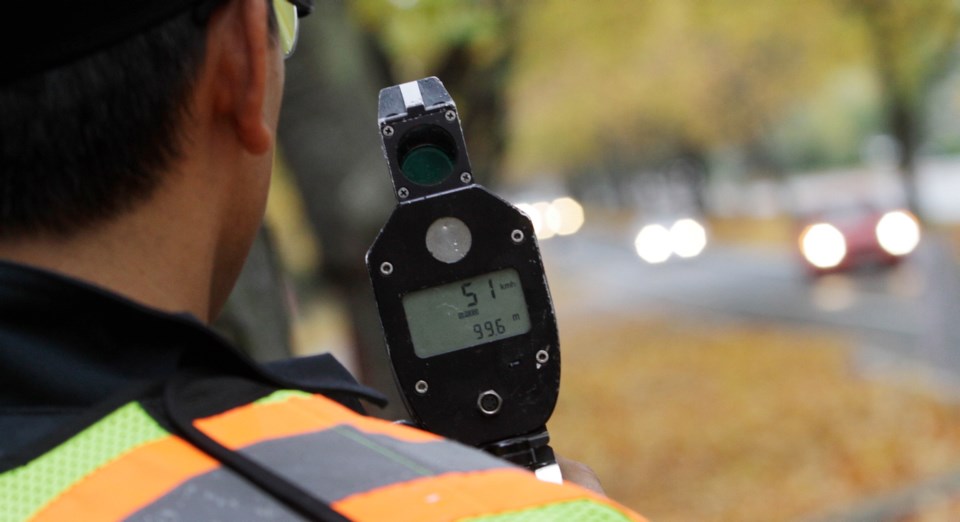Victoria might test drive lower speed limits in some neighbourhoods.
The city has been pushing to have the province reduce the default residential speed limit to 40 kilometres an hour from 50 km/h. Now, the city’s community development committee wants city staff to report back on options surrounding testing the lower speed limit in a neighbourhood such as James Bay.
Committee member Coun. Ben Isitt hopes council will support having staff investigate a pilot project, possibly in the James Bay or Vic West.
“I think if we can save one life [it’s worth it]. We spend $200 million a year, so to allocate $50,000 per neighbourhood that could even save one life — that would be a reasonable expense,” Isitt said.
Brad Delebur, city acting assistant director of transportation, said James Bay would be a logical choice for a pilot because there are limited access points. But, he said, it would be an involved process.
“We don’t have the authority to just go ahead and put up a ‘Welcome to James Bay — 40 K’ [sign] and have that suffice from a legal perspective,” Delebur said. “You have to create a bylaw and list every street that you’re going to sign.”
The change would affect only residential streets. The speed limit on major roads would be maintained.
Victoria has already won support from Island communities through the Association of Vancouver Island Coastal Communities for a resolution calling on the province to make 40 km/h the default speed on residential streets. The city hopes the Union of B.C. Municipalities will pass a similar resolution at its annual convention this fall.
If the province lowered the default residential speed to 40 km/h, municipalities would only have to sign those streets that have higher or lower speed limits. That would probably cost Victoria between $80,000 and $100,000, said director of engineering Dwayne Kalynchuk.
If Victoria was to go it on its own and make the default speed 40 km/h on residential streets, the cost of signage would be closer to $300,000, Kalynchuk said. About 60 per cent of the city’s road are designated as local roads.
Undertaking a pilot is not in the engineering department’s work plan or budget. It would also likely involve undertaking a community consultation process before implementation, he said.
Kalynchuk said that about 85 per cent of traffic on residential streets is already travelling between 40 and 45 km/h due to factors such as narrow street widths and parked cars.
“So I really question whether or not there’s an issue out there that requires dealing with it,” he told committee members.
“It certainly hasn’t come to our attention. I know there’s concerns about speed on collectors and arterials, which is a different issue. But on the residential streets, our data doesn’t show there’s a huge problem out there.”
The B.C. Ministry of Justice notes that a pedestrian hit by a vehicle travelling at 30 km/h has a 90 per cent chance of surviving. That drops to 20 per cent with a vehicle travelling 50 km/h.



